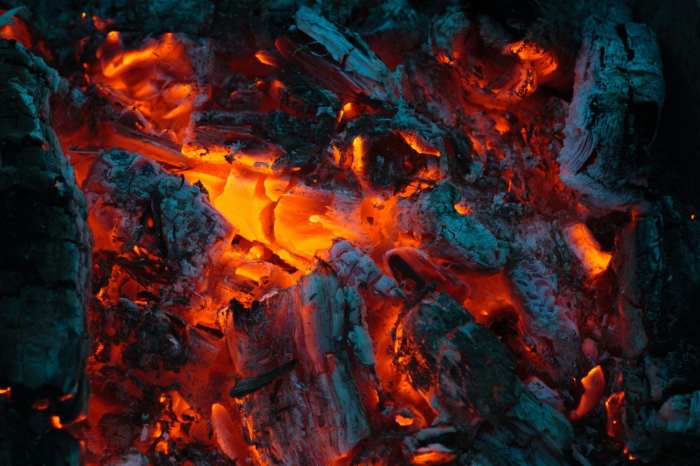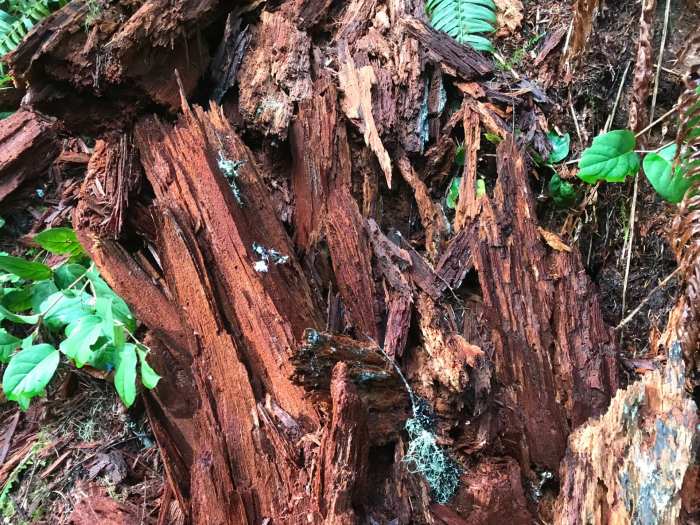In the realm of Indigenous storytelling, “How Beaver Stole Fire from the Pines” stands as a captivating legend, weaving together elements of origin, symbolism, and cultural preservation. This tale, passed down through generations, offers a profound glimpse into the interconnectedness of nature, the challenges faced by Indigenous peoples, and the transformative power of knowledge.
At the heart of this legend lies Beaver, a cunning and resourceful creature, and the Pines, guardians of the sacred fire. As Beaver embarks on a perilous journey to steal fire, he encounters obstacles and trials that mirror the struggles and triumphs of Indigenous communities.
Through wit and determination, Beaver outsmarts the Pines, bringing the gift of fire to his people, forever altering their way of life.
Origins of the Legend
The legend of “How Beaver Stole Fire from the Pines” has its roots in traditional Indigenous oral storytelling traditions. It is a widespread tale among many Indigenous communities in North America, particularly in the Pacific Northwest and Subarctic regions.
The legend holds significant cultural importance within Indigenous cultures. It serves as a valuable tool for storytelling, cultural preservation, and the transmission of knowledge from one generation to the next. Through the retelling of this legend, Indigenous communities maintain their cultural heritage and pass on important values and beliefs.
Traditional Interpretation
Traditionally, the legend has been interpreted as a symbolic representation of the relationship between humans and the natural world. The beaver, a resourceful and industrious animal, represents the ingenuity and determination of humans in overcoming challenges and adapting to their environment.
The pines, on the other hand, symbolize the protective and life-giving qualities of nature.
Role in Cultural Preservation
The legend of “How Beaver Stole Fire from the Pines” plays a crucial role in preserving Indigenous cultural traditions. By incorporating elements of the natural world, the legend provides a tangible connection to the land and its resources. It reinforces the importance of respecting and protecting the environment, as well as the interdependence between humans and nature.
Characters and Symbolism: How Beaver Stole Fire From The Pines

The legend of Beaver Stealing Fire from the Pines features a diverse cast of characters, each carrying symbolic significance and embodying specific themes. The main protagonists, Beaver and the Pines, represent opposing forces and contrasting attributes.
Beaver: The Trickster and Innovator
Beaver, the central figure in the legend, embodies the archetypal trickster. Cunning, resourceful, and determined, he challenges authority and uses his wits to outsmart his opponents. As a symbol of innovation and progress, Beaver’s ability to steal fire from the Pines represents humanity’s triumph over nature and the advancement of civilization.
The Pines: Guardians of Wisdom and Tradition
The Pines, on the other hand, represent tradition, wisdom, and the established order. They possess the knowledge of fire, a vital resource for survival and warmth. Their refusal to share this knowledge with Beaver symbolizes their resistance to change and their fear of losing their power.
Other Characters and Spirits
The legend also includes other animals and spirits who play supporting roles. The Owl, known for its wisdom and foresight, advises Beaver on his quest. The Frog, a symbol of adaptability and transformation, assists Beaver in crossing a treacherous river.
These characters add depth and complexity to the narrative, reinforcing the themes of trickery, innovation, and the conflict between tradition and progress.
The Journey to Steal Fire

Beaver’s journey to steal fire from the Pines is a tale of courage, wit, and resilience. It reflects the struggles and triumphs of Indigenous peoples, who have faced numerous obstacles in their quest for survival and self-determination.
Challenges and Obstacles
- Hostile Environment:The Pines lived in a well-fortified village, making it difficult for Beaver to approach undetected.
- Fierce Guardians:The Pines were known for their fierce warriors and cunning traps, posing a significant threat to Beaver’s mission.
- Natural Hazards:Beaver’s journey involved crossing treacherous terrain, including swift rivers and dense forests, adding to the challenges he faced.
Strategies and Methods
Despite the challenges, Beaver employed several strategies to outwit the Pines and obtain fire:
- Cunning Disguise:Beaver disguised himself as a Pine by covering himself in pine needles and imitating their mannerisms.
- Stealth and Patience:He moved stealthily and patiently, observing the Pines’ habits and waiting for the opportune moment to strike.
- Clever Deception:Beaver used his intelligence to deceive the Pines, such as creating a diversion to distract their attention.
- Alliances with Animals:He sought help from other animals, such as the Owl, who provided him with valuable information and assistance.
The Gift of Fire

Beaver’s successful theft of fire from the pines had a profound impact on the animal kingdom and the Indigenous community. The possession of fire provided warmth, protection, and a means of cooking food, transforming the way of life for both animals and humans.
Practical and Symbolic Significance of Fire
Fire played a crucial role in Indigenous cultures, serving practical and symbolic purposes. Practically, fire provided warmth during cold nights, warded off predators, and facilitated cooking, making food more digestible and nutritious. Symbolically, fire represented light, warmth, and the transformative power of nature.
It was used in ceremonies, rituals, and storytelling, serving as a bridge between the physical and spiritual realms.
Consequences and Responsibilities
The possession of fire also brought with it consequences and responsibilities. The ability to control and use fire required caution and wisdom. Indigenous communities established rules and protocols around the use of fire to prevent accidental burns, wildfires, and misuse.
They understood that fire, while beneficial, could also be destructive if not handled responsibly.
Cultural Adaptations
The legend of how Beaver stole fire from the Pines has been adapted and retold by various Indigenous communities across North America, resulting in diverse versions of the story. These adaptations reflect the unique cultural perspectives and experiences of each community, leading to variations in storytelling, characters, and themes.
Similarities and Variations
- Central Theme:The core theme of Beaver’s quest to obtain fire for his people remains consistent across versions.
- Beaver as Trickster:Beaver is often depicted as a clever and resourceful trickster, using his intelligence to outwit the Pines.
- Pine as Guardian:The Pines are portrayed as powerful guardians of fire, symbolizing the dangers and importance of this element.
Variations in Storytelling, How beaver stole fire from the pines
Variations in storytelling arise from the different cultural contexts and oral traditions of each community. Some versions emphasize the Beaver’s cunning and trickery, while others focus on the importance of perseverance and community cooperation.
Variations in Characters
- Additional Characters:Some versions introduce additional characters, such as other animals or humans, who assist or hinder Beaver in his quest.
- Gender Variations:In some adaptations, Beaver is portrayed as female, highlighting the role of women in Indigenous cultures.
Variations in Themes
Cultural adaptations also lead to variations in the themes explored in the legend. Some versions emphasize the importance of respect for nature and the consequences of stealing, while others focus on the transformative power of fire and its role in human society.
Reasons for Adaptations
- Cultural Identity:Adaptations reflect the unique cultural identity and values of each community, shaping the story to align with their beliefs and traditions.
- Geographical Factors:The environment and resources available to each community influence the details of the story, such as the species of tree involved or the method used to steal the fire.
- Educational Purpose:The legend is often used as a teaching tool to convey moral lessons, cultural values, and ecological principles.
Artistic Representations
The legend of how the beaver stole fire from the pines has inspired numerous artistic representations, including paintings, sculptures, and performances. These artistic interpretations have played a crucial role in preserving and transmitting the legend to future generations, while also offering unique insights into its cultural significance.
Paintings depicting the legend often portray the beaver as a cunning and resourceful animal, using its intelligence and determination to outwit the powerful pines. In some paintings, the beaver is shown as a small and unassuming creature, highlighting its ability to overcome seemingly insurmountable obstacles.
Other paintings emphasize the transformative power of fire, depicting the beaver bringing light and warmth to its community.
Sculptures
Sculptures of the beaver stealing fire from the pines are often found in public spaces, serving as a reminder of the legend’s enduring legacy. These sculptures range from small, intricate pieces to large, monumental works. Some sculptures capture the moment when the beaver first encounters the fire, while others depict the animal triumphantly carrying the flames back to its community.
Performances
The legend has also been adapted into various performance forms, including plays, dances, and storytelling. These performances bring the legend to life, allowing audiences to experience the story’s dramatic elements and emotional resonance. Performers often use costumes, props, and music to create a vivid and engaging portrayal of the legend.
Key Questions Answered
What is the significance of fire in Indigenous cultures?
Fire held immense practical and symbolic importance, providing warmth, protection, cooking, and signaling. It also played a central role in ceremonies, rituals, and storytelling.
How does the legend reflect the challenges faced by Indigenous peoples?
Beaver’s journey to steal fire mirrors the struggles Indigenous communities have faced in asserting their rights and preserving their traditions in the face of adversity.
What is the deeper meaning behind the character of Beaver?
Beaver represents the resourcefulness, determination, and adaptability of Indigenous peoples, who have overcome obstacles and thrived despite challenges.